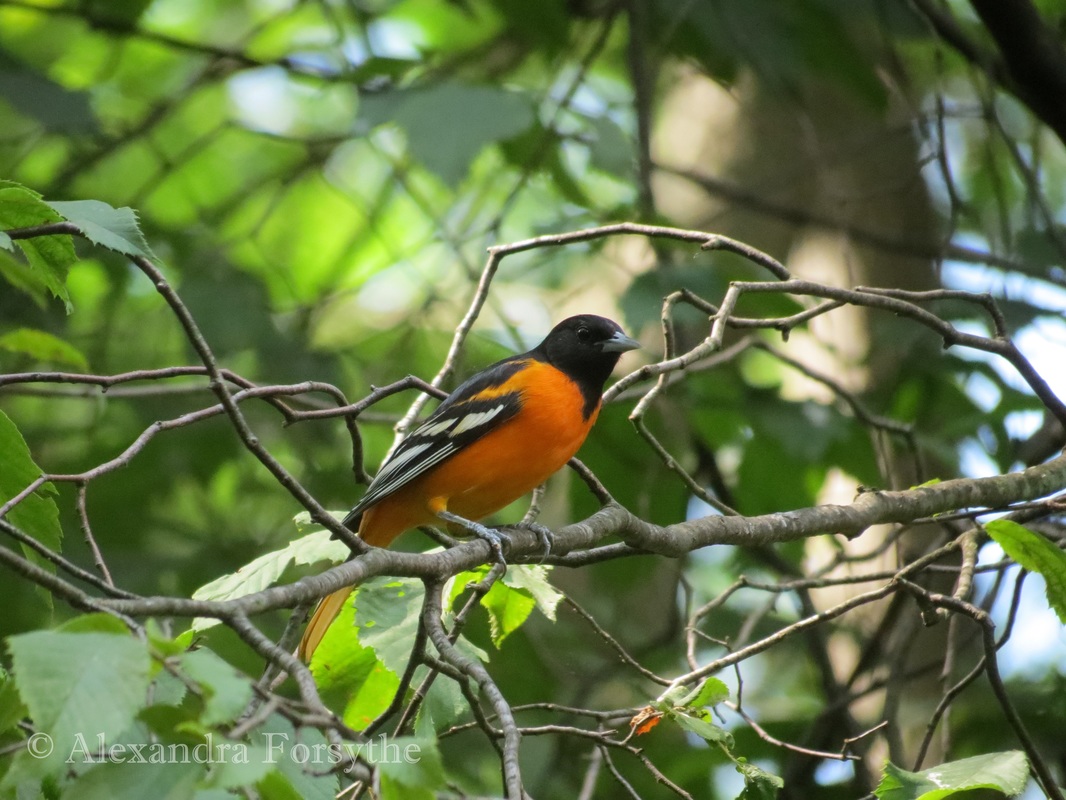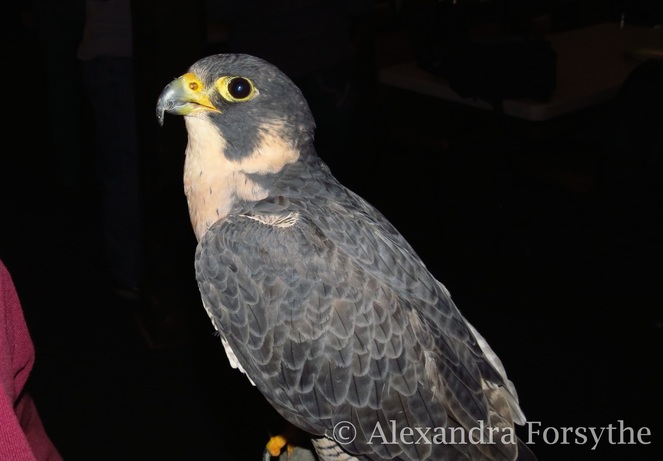
Baltimore Orioles, with their bright plumage and beautiful song, are favorites among backyard birders. John James Audubon studied and wrote about the Oriole extensively. He wrote: "Much might the traveller find to occupy his mind, and lead him into speculations regarding the past, the present, and the future, were he not attracted by the clear mellow notes, that issue from the woods, and gratified by the sight of the brilliant Oriole now before you."
Gene Stratton-Porter greatly admired Orioles. In "Homing with the Birds" she wrote: "The oriole, spilling notes of molten sweetness, as it shot like a ray of detached sunshine to its nest in the chestnut tree across the road was mine." She also studied Orioles extensively, particularly the architecture of their nests. Orioles typically build a nest in the shape of a hanging pouch with solid walls, but Gene documented at least one Oriole, possibly two or more, that framed a window in its nest. "It is impossible for this oriole to build this window without knowing for what purpose she intended using it; in fact, it required thought to plan and construct it. She has to remember the confinement and inconvenience of former nests, and determine that in the future she would obviate these difficulties. So remembering the past and providing for the future, in this nest she built a window. She was in advance of her time... How this bird must have enjoyed sitting with her head out of the window while she brooded, thus having light and air and seeing any danger to be avoided! ...[D]ifferent birds of the same species have different degrees of mentality and different characteristics,...very much like humanity after all."
The state bird of Maryland, the Baltimore Oriole was named for royalty. It was given its name in honor of Lord Baltimore, founder of Maryland, due to its coloration. The colors of the Oriole match the colors of Lord Baltimore's coat of arms.
Males do not turn that bright orange color until the fall of their second year. Females get better with age, turning deeper orange each passing year. Birders can easily confuse an older female with a young male.
Not surprisingly, everyone wants to attract Baltimore Orioles to their yards. The best way to attract Orioles is through their stomachs. I set out fresh orange slices, but I also use grape jelly. I have found that it is best to use the least expensive jelly you can find and be consistent. If you switch to an expensive jelly, the birds don't like to go back to the cheap stuff! It also helps to plant native fruit trees in your yard, preferably plants that bear dark-colored fruit at different seasons. I have several mulberry, raspberry, blackberry, chokecherry, and other native fruit-producing plants in my yard, so the Orioles tend to ignore the feeders once the fruits begin to ripen. Still I provide fresh oranges, jelly and clean water just in case they need an easy snack.
I have a nesting pair in my yard every year, but I don't tend to get a large flock of them at once. Prepare to be envious and watch this video of several Baltimore Orioles dining on this person's deck (skip to the 3:30 mark and be dazzled!): Wild Bird House : Orioles Everywhere Spring 2013 Baltimore Orioles & Female Orchard Oriole

 RSS Feed
RSS Feed
